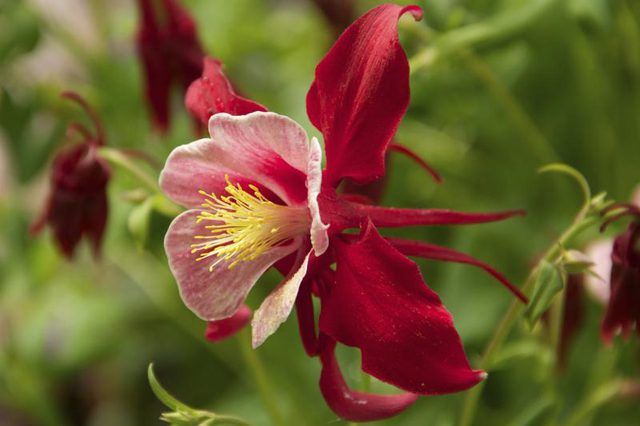Bulbs
Flower Basics
Flower Beds & Specialty Gardens
Flower Garden
Garden Furniture
Garden Gnomes
Garden Seeds
Garden Sheds
Garden Statues
Garden Tools & Supplies
Gardening Basics
Green & Organic
Groundcovers & Vines
Growing Annuals
Growing Basil
Growing Beans
Growing Berries
Growing Blueberries
Growing Cactus
Growing Corn
Growing Cotton
Growing Edibles
Growing Flowers
Growing Garlic
Growing Grapes
Growing Grass
Growing Herbs
Growing Jasmine
Growing Mint
Growing Mushrooms
Orchids
Growing Peanuts
Growing Perennials
Growing Plants
Growing Rosemary
Growing Roses
Growing Strawberries
Growing Sunflowers
Growing Thyme
Growing Tomatoes
Growing Tulips
Growing Vegetables
Herb Basics
Herb Garden
Indoor Growing
Landscaping Basics
Landscaping Patios
Landscaping Plants
Landscaping Shrubs
Landscaping Trees
Landscaping Walks & Pathways
Lawn Basics
Lawn Maintenance
Lawn Mowers
Lawn Ornaments
Lawn Planting
Lawn Tools
Outdoor Growing
Overall Landscape Planning
Pests, Weeds & Problems
Plant Basics
Rock Garden
Rose Garden
Shrubs
Soil
Specialty Gardens
Trees
Vegetable Garden
Yard Maintenance
How to Plant Columbine Seeds
How to Plant Columbine Seeds. With its bluish-lavender flowers that nod from thin, straight stems in spring, columbine (Aquilegia vulgaris) brightens the garden. An easy plant to grow, the columbine dies back and becomes dormant in winter, but usually returns in spring. It grows in U.S. Department of Agriculture plant hardiness zones 3 through 8....

With its bluish-lavender flowers that nod from thin, straight stems in spring, columbine (Aquilegia vulgaris) brightens the garden. An easy plant to grow, the columbine dies back and becomes dormant in winter, but usually returns in spring. It grows in U.S. Department of Agriculture plant hardiness zones 3 through 8. You can start columbine plants from seeds, provided you give the seeds some special treatment before sowing them.
Soaking and Chilling
Columbine seeds have an especially hard, water-resistant outer coat. If a wild columbine flower drops seed on the ground in fall, weather and abrasive soil help soften the seed coat to allow germination, but this can take months and might not happen at all if conditions aren't correct. Pre-treating columbine seeds by soaking and then chilling them, called stratification, mimics these natural conditions and helps germination. Soak the seeds for 24 hours in room-temperature water, then remove any non-viable, floating seeds, drain the water from the remaining seeds and mix them with moistened vermiculite. Seal the mixture in a labeled plastic bag and chill at 40 to 45 degrees Fahrenheit for two to three weeks before sowing.
Getting Started
After chilling the seeds, tamp a sterile, fine-textured potting soil or a sterile, soilless mixture designed for seed sowing into trays or pots. Don't use garden soil. It's essential the seeds are exposed to light, so scatter the vermiculite-seed mixture on the surface of the moistened soil or soilless mix, spreading the seed mixture out thinly so the seeds aren't covered by the vermiculite. Columbine seeds are dark and tiny, but you should be able to see some of them on the surface.
New Shoots
After sowing, cover the trays or pots with clear plastic to keep retain moisture and place them where the temperatures is 59 to 68 degrees Fahrenheit in a bright, indirectly lit spot. Check the surface of the soil or mix every few days, keeping it moist by misting the surface lightly with water whenever it feels a bit dry. Replace the plastic after misting. Shoots usually appear after one to three months. When they appear, remove the plastic, move the pot or tray into bright but indirect light and keep the soil moist by placing pots or trays in water until the soil surface feels lightly moist. Avoid overhead watering, because overly wet soil promotes fungal growth that can kill tender new plants.
Self-Seeding Outdoors
If you already have native columbines growing in your garden, you can produce new seedlings in the spring by letting the plants self-seed, because offspring of these plants are usually the same as the parents. Leave some flowers on the plants, allowing them to dry naturally and drop their seed when it's mature. If your columbines are hybrids, they're likely to produce new plants that differ from the parents. In that case, buy seed, rather than collecting it. These hybrid columbines also grow in USDA zones 3 through 8.